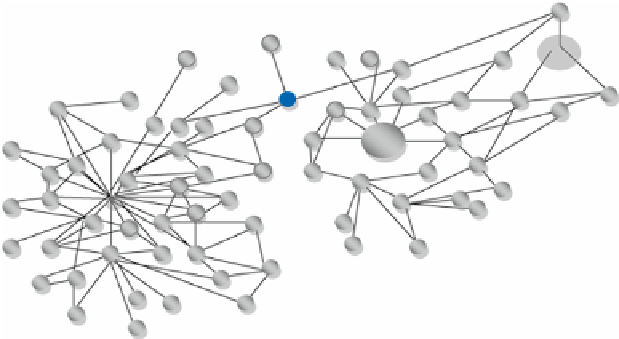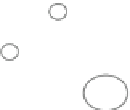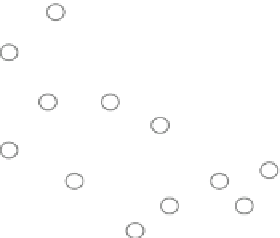Biomedical Engineering Reference
In-Depth Information
X
Z
Y
Fig. 15.1
Social network graph of physicians
of that individual. The network can also be used to measure social capital—the
value that an individual gets from the social network.
These concepts are often displayed in a social network diagram, where nodes are
the points and ties are the lines. Any type of dyadic relationship can be represented,
but most common are communication, friendship choices, advice, trust, influence,
and exchange relationships. Most of these relationships are not necessarily recipro-
cal. In that case, directed lines can be used. Vertices are sometimes used for points,
arcs for directed lines, and edges for undirected ones. This representation makes
it possible to apply graph theory, a branch of discrete mathematics. Connecting
positive or negative signs to directed lines enables the representation of positive and
negative ties (Stokman
2001
).
Research in a number of academic fields has shown that social networks operate
on many levels, from families up to the level of nations, and play a critical role in
determining the way problems are solved, organizations are run, and the degree to
which individuals succeed in achieving their goals. The shape of a social network
helps determine a network's usefulness to its individuals. Smaller, tighter networks
(strong ties) can be less useful to their members than networks with lots of loose
connections (
weak ties
) to individuals outside the main network. More open net-
works, with many weak ties and social connections, are more likely to introduce
new ideas and opportunities to their members than closed networks with many
redundant ties. In other words, a group of friends who only do things with each
other already share the same knowledge and opportunities. A group of individuals
with connections to other social worlds is likely to have access to a wider range of
information.
This can be illustrated in a social network diagram of physicians shown in
Fig.
15.1
. The circles (nodes) represent physicians and the size of the circle repre-
sents the size of prescriptions they write. The lines represent the connections
between physicians (ties). The ties shown here are nondirectional but they may be









Search WWH ::

Custom Search